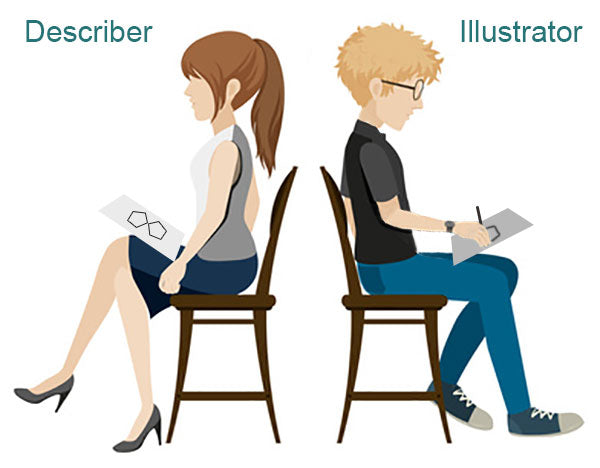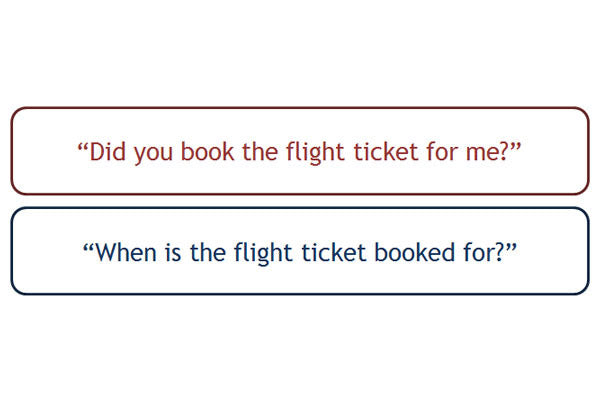Purpose
This is an engaging exercise for those who work in marketing, sales or customer services. It allows them to see their organisation from the customer’s point of view. They can then use this knowledge to formulate strategies that improve their sales and customer services. This exercise is ideal for delegates from the same organisation.
Objective
Write a letter from an imaginary customer to your own organisation.
What You Need
Several blank sheets to write the letters.
Setup
- Divide the delegates to groups of 2 or 3.
- Distribute the blank sheets to all delegates.
Stage 1: Praise Letter
- Ask each group to write a letter to their organisation or department acting as a customer who has purchased a product or service recently.
- Ask the delegates to consider the following:
- What would the customer thank you for?
- What would impress the customer the most?
- How would the customer express his gratitude?
- What specific aspects of your product or service appeals to the customer?
- What did the customer think of your customer service and sales personnel?
- Allocate 10 minutes for this exercise.
- Bring everyone together and ask the group to read through their letters of praise.
- Encourage a discussion and record a series of statements on a flipchart or whiteboard to summarise the important areas that are praise worthy and were suggested by various groups.
- Highlight those areas that were suggested by many groups to emphasise what everyone thinks are the strengths of the organisation or department.
- Follow with a short discussion.
Stage 2: Criticism Letter
- Now ask the same groups to write a letter of criticism from an imaginary customer’s point of view. This can include areas of weakness or short comings in customer’s eyes.
- As before, allocate 10 minutes for this part.
- Bring everyone back together and ask them to read through their criticism letters for each other.
- As in stage 1, record the summary on a flipchart.
- Encourage a discussion on why these areas are considered weak. Are there areas that most people think the customer will complain about? If so, highlight these and then move on to a discussion on how to address these.
Timing
Explaining the Exercise: 2 minutes
Activity: 10 min stage 1 writing letter + 10 min stage 1 discussions + 10 min stage 2 writing letter + 10 min stage 2 discussions = 40 minutes
Group Feedback: 10 minutes
Discussion
Stage 1:
What did you include in your praise letter that others did not? What did others include that you did not consider? Are you happy with what customers think of your organisation? What would you like to be different about it? What can you do to achieve this?
Stage 2:
What areas did you highlight as weakness? Was there a consensus among the groups on these weak areas? Which areas need to be addressed immediately? What are you going to do about them? How do you want your customers to think about your organisation in respect to these areas?
Variations
Rather than considering a traditional letter, you can use modern customer feedback instead. You can use one or more of these types:
- Customer feedback on the phone
- Customer e-mails
- Customer comments in review sites
- Customer comments in social media sites such as Facebook, Twitter, YouTube, Google+, etc.
- Testimonials
- Customer views in comparison sites
- Customer comments in response to articles in mainstream journals, blogs, or news sites.
Soft Skills Training Materials
Get downloadable training materials
Online Train the Trainer Course:
Core Skills
Learn How to Become the Best Trainer in Your Field
All Tags
Training Resources for You

Course Design Strategy
Available as paperback and ebook

Free Training Resources
Download a free comprehensive training package including training guidelines, soft skills training activities, assessment forms and useful training resources that you can use to enhance your courses.

Our Comprehensive Guide to Body Language

Train the Trainer Resources
Get Insights - Read Guides and Books - Attend Courses
Training Materials
Get downloadable training materials on: Management Training, Personal Development, Interpersonal Development, Human Resources, and Sales & Marketing














Leave a comment
All comments are moderated before being published.
This site is protected by hCaptcha and the hCaptcha Privacy Policy and Terms of Service apply.